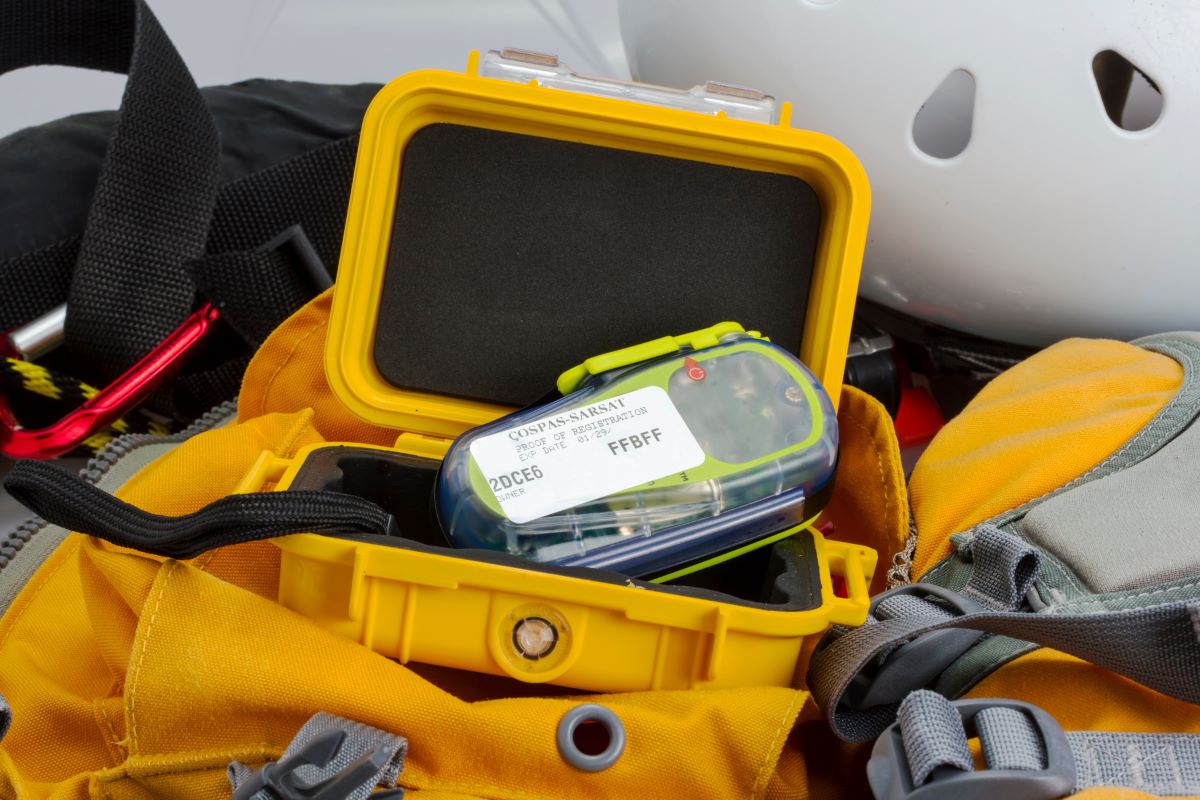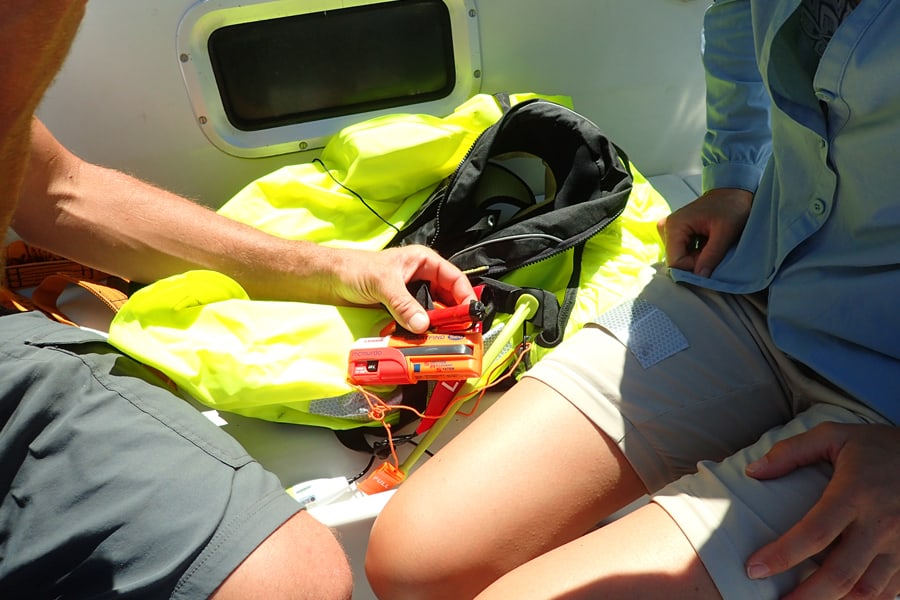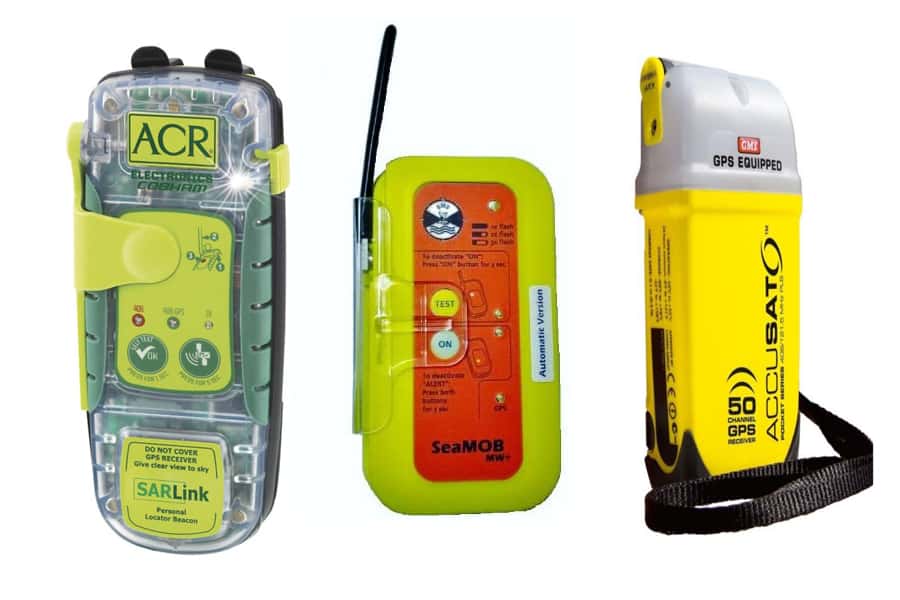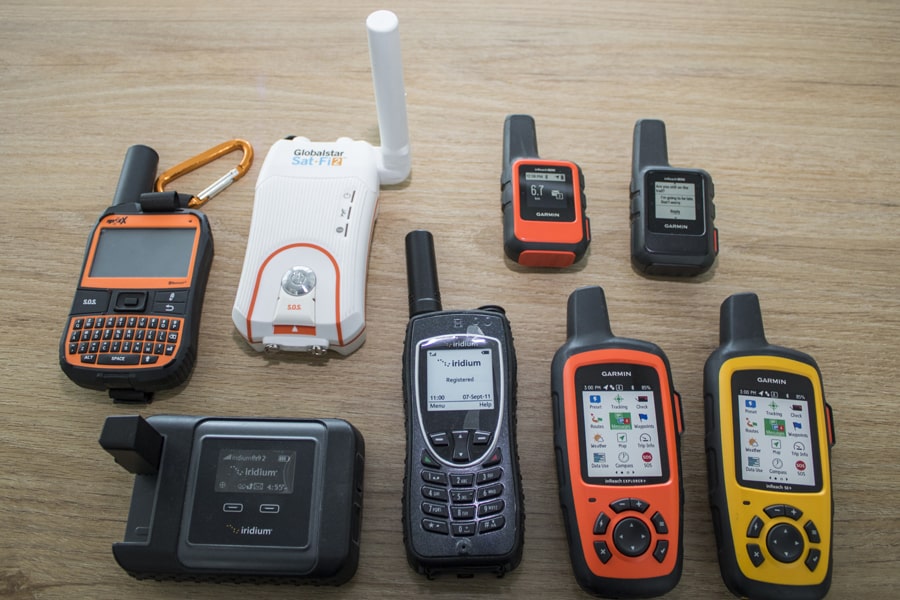
The Importance of EPIRBs and PLBs While Boating in Canada
Boating is an activity that requires all the right conditions to be enjoyed. However, marine hazards can still happen. Whether we’re talking about weather changes or human error, boating accidents are sometimes closer than we think. That’s why marine safety and survival equipment is mandatory on all boats and pleasure crafts.
To help you better navigate the subject, the National Boating Safety School explains everything you need to know about EPIRBs (Emergency Position Indicating Radio Beacons) and their smaller versions, PLBs (Personal Locator Beacons).
What is a personal locator beacon?
In March 2022, Canada had nearly 50 boating accidents of all kinds. While boating is a relaxing pastime, this statistic shows that safety plays an important role.
That’s why today the government has mandated the need to have boating safety equipment on board. One of the most important is without a doubt the PLB, or Personal Locator Beacon.
Small in size and often commercially available, PLBs are designed to signal your position and alert the Canadian Coast Guard in the event of:
- A boating accident
- Drifting due to weather conditions
- Witnessing an accident before rendering assistance
When to use a personal locator beacon
A Personal Locator Beacon, as its name indicates, is to used to signal your location in risky, dangerous or emergency situations. These situations include all nautical accidents such as:
- Fallingoverboard without the possibility of using the reboarding device
- Drifting
- Fires
Whether these situations are caused by an engine failure, a lack of monitoring of weather conditions or strong winds, they all present a danger requiring the use of this equipment.
Personal Locator Beacons should be used when you are faced with a situation where your survival is at stake.
Different types of personal locator beacons
There are different types of personal locator beacons for signaling distress when boating alone or as a group while using your pleasure craft. Each type of locator beacon has a particular mode of operation and different features.
EPIRB (Emergency Position Indicating Radio Beacon)
Sometimes known as an AIS beacon, an EPIRB only uses radio waves to signal its position. This beacon can alert boats that are within one nautical mile (1852 km) of the transmitting boat.
Once the alert is launched, boats with an AIS receiver, compatible with the beacon’s radio wave, will see the boat to be rescued appear on their navigation radar.
The advantage of the EPIRB is that it can be programmed to take effect when a special life jacket is automatically triggered to emit its signal.
PLB (Personal Locator Beacon)
The PLB (Personal Locator Beacon) is only to be used in extreme situations. It sends an alert to the Global Maritime Distress and Safety System (GMDSS) for 24 hours via a satellite signal.
Although its transmission frequency has a longer range, this beacon does not contact surrounding vessels and must be launched manually. On the other hand, the intervention and response time is much faster.
If you have this type of beacon, you must register it in your name with the naval authorities to facilitate identification during the rescue.
VHF Radio and GPS location device
Although it is not technically a beacon, this radio can also be used in a similar manner. In fact, in the event of a disaster or accident, it uses very high frequency (VHF) to communicate with surrounding boats.
With a range similar to the beacon by radio wave, it contacts the nearest boat directly, sounding an alarm through other VHF radios.
Moreover, the radio has a GPS functionality indicating the location of the disaster during the period of use. In other words, in order for you to be located, you must manually activate the distress button on the radio. This will contact the emergency services through the airwaves. This corresponds with Maritime Mobile Service Identities (MMSIs) where a 9 digit number is used to identify you and your pleasure craft. Be careful to configure the MMSI number after purchase otherwise the location of the disaster may be impossible to pinpoint.
How personal locator beacons work
The distress signal emitted by a vessel is directly linked to a network of satellites (COSPAS SARSAT) locating distress alerts. When a beacon is triggered, it sends a distress signal corresponding to an associated frequency that will be picked up by the satellite.
This frequency works as a trigger. In other words, once captured, the satellite sends the location information to the nearest maritime rescue stations.
Once the network has triangulated the location of the alert and this information is transmitted, the response time is estimated at between 15 and 45 minutes.
Boat safely with the National Boating Safety School
During boat navigation, the purpose of a personal locator beacon is to save lives. Thanks to their GPS location and the various radio waves on which they transmit, these beacons are vital boating safety equipment.
Connected directly to rescue stations, personal locator beacons facilitate intervention and rescue at sea. It is important to have a beacon before going out on the water.
To learn more about other boating safety equipment, register for our online boating exam and discover our boating safety course to obtain your boat license.
Register now today to start boating safely on Canadian waters.




